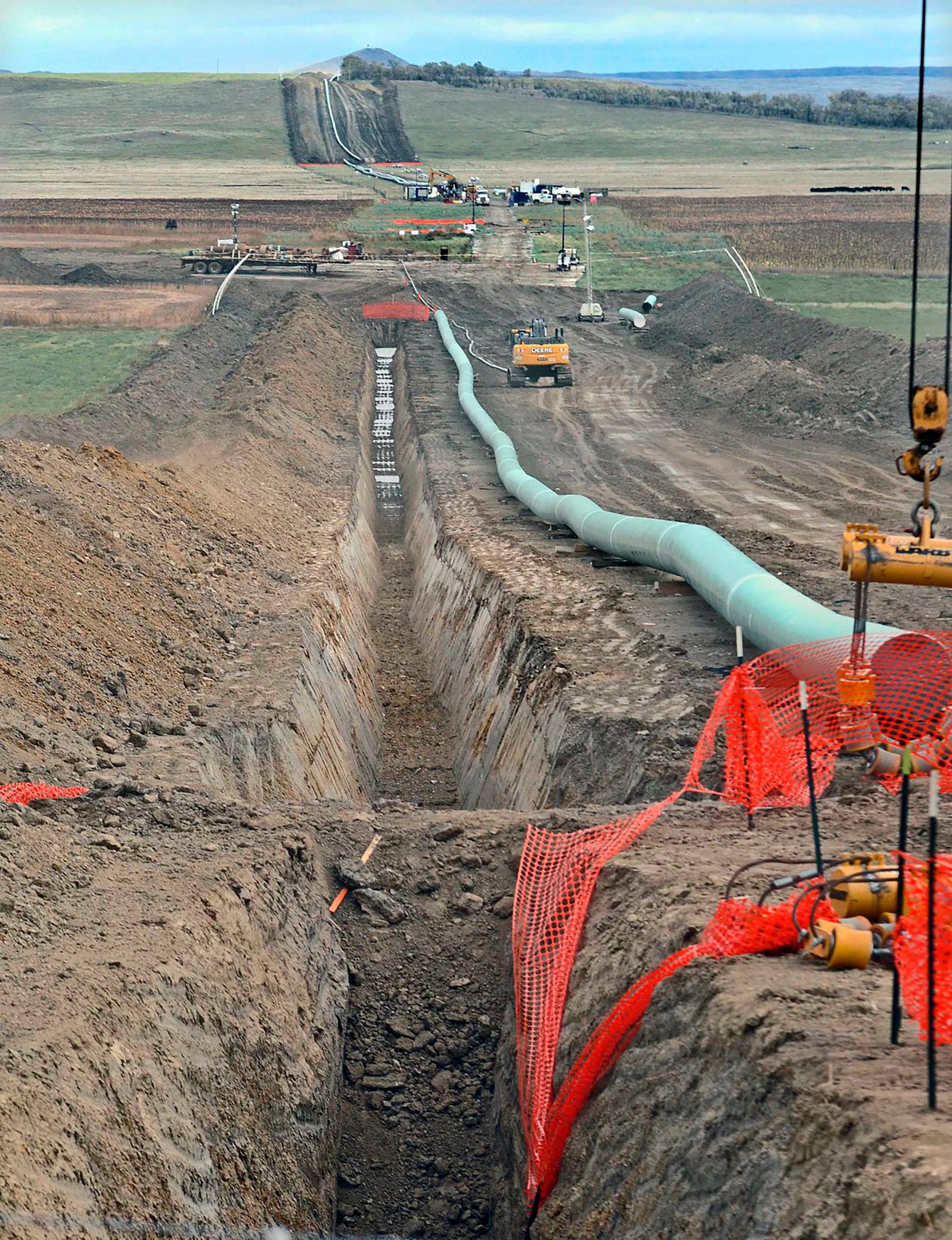Feds leave future of Dakota Access pipeline's controversial river crossing unclear in draft review
The U.S. Army Corps of Engineers on Friday released its draft environmental impact statement of the Dakota Access oil pipeline, but said it's waiting for more input before deciding the future of the line’s controversial river crossing in North Dakota

BISMARCK, N.D. (AP) — Federal officials on Friday released a draft environmental review of the Dakota Access oil pipeline, but said they're waiting for more input before deciding the future of the line’s controversial river crossing in North Dakota.
Suggested Reading
The draft was released more than three years after a federal judge ordered the environmental review and revoked the permit for the Missouri River crossing, upstream of the Standing Rock Sioux Tribe's reservation. The tribe is concerned a pipeline oil spill could contaminate its water supply.
Related Content
North Dakota officials support a decision that ultimately allows the pipeline to continue operating as it has. The tribe is calling for a new review and a pipeline shutdown.
The environmental review is key for whether the federal government reissues the permit. The pipeline has been operating since 2017, including during the environmental review.
The draft environmental impact statement, which is dated in June but was made public Friday, noted that the Army Corps of Engineers “has not selected a preferred alternative," but will make a decision in its final review, after considering input from the public and other agencies.
The draft details five options, including denying the easement for the crossing and removing or abandoning a 7,500-foot (2,286-meter) segment. Officials could also approve the easement with measures for “increased operational safety,” or grant the same easement with no changes.
A fifth option is a 111-mile (179-kilometer) reroute of the pipeline to north of Bismarck, over 38 miles (61 kilometers) upstream from the current crossing. The reroute would require new permits from federal, state and local authorities and regulators, which could take at least two years. The exact path of such a reroute is unknown, according to the draft.
“We are seeking public input on the environmental analysis of each alternative, and that input combined with the environmental analysis will help us to make an informed decision among the alternatives,” Corps Omaha District spokesman Steve Wolf told The Associated Press.
A comment period will end Nov. 13. Public meetings are scheduled Nov. 1-2 in Bismarck.
A final environmental impact statement will follow the public input and environmental analysis, and a formal decision will be made, Wolf said.
Republican U.S. Sen. John Hoeven of North Dakota told the AP a final alternative is expected to come out in fall 2024. He said he hopes for a decision that allows the pipeline to continue operating.
“Clearly they should go ahead and approve it without any additional modifications. The safety measures are in place,” Hoeven said.
Tribal Chairwoman Janet Alkire on Friday said the draft review should be “invalidated” and the Corps should “start from scratch" on a new review, with the pipeline shut down. The tribe is furious, she said.
“The pipeline is an imminent threat to the Missouri River, sensitive habitat and sacred burial sites along the riverbank," Alkire said. "The oil company’s emergency response plans are inadequate, its safety track record is horrendous, and there’s been a stunning lack of transparency with Standing Rock throughout the environmental review process, including inaccurate characterizations of tribal consultation."
She also called on the public to submit comments supporting a new review and a shutdown of the pipeline.
North Dakota Republican Gov. Doug Burgum in a statement Friday said he supports granting the easement as it was previously issued, citing the pipeline as a safe operation and better than rail.
North Dakota Mineral Resources Department Director Lynn Helms told the AP, “The Corps has said today that they're neither proponent or opponent of the project; therefore, their preferred alternative will be in their final decision.”
Hoeven said an Army official had notified him that the Corps wouldn't make a recommendation in the draft, but the agency will do more consultation in addition to the public input. The senator said he emphasized that the Corps consult with the state and the oil-rich Three Affiliated Tribes, whose reservation shares geography with North Dakota's oil patch.
State and federal officials and the pipeline's company say the line is safe. It moves oil from western North Dakota to Illinois. Leaders in North Dakota’s oil industry and state government consider the pipeline to be crucial infrastructure, with far less oil now transported by rail.
The pipeline is moving about 600,000 to 650,000 barrels of oil per day. Its capacity is 750,000 barrels per day. North Dakota produces about 1.1 million barrels per day.
The U.S. Supreme Court last year refused to take up an appeal of the tribe’s lawsuit over the pipeline. The tribe first filed the lawsuit in 2016. Thousands of people gathered and camped near the pipeline's river crossing for protests that lasted months and sparked hundreds of arrests in 2016 and 2017. More than 830 criminal cases resulted from the protests.
